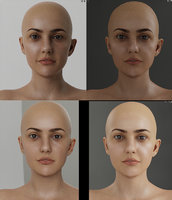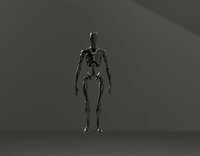Of course, it's super rare when I include a human in my renders, but the principles are the same, so here's my tips...
1) Composition! Composition! Composition!... No matter how good your render is.... whether you are doing a simple promo or a full scale render, if you have a awful or boring composition, you're no going to attract an audience. A good, solid composition will win over technique every time.
I have a tutorial on composition.
2) Good lighting doesn't necessarily have to be complex... just well placed. In Poser, I use a very simple 3 light set; Sunlight (off-white coloring usually set between 150-400% with a 50-70% shadow and generally coming out of the upper left corner), a Fill light (medium gray coloring, no shadows, >30% intensity pointed at the main character) and a Backlight (cool medium gray, no shadows, >20% intensity, usually coming from the lower right corner from behind the main character).
In DAZ Studio Iray, I use 2 lights; a distant photometric light at 100% with Lumen cranked up quite a bit (that's makes believable outside daylight) and a spot photometric light (pointed at the main character)-- that's basically a fill light with no shadow. Sometimes, I'll add more spotlights if there isn't enough light on the main subject.
3) Use "Depth of Field" in DS and Poser... Nothing sells an image better than DoF. DoF always makes an image a little more realistic. If you've never used it-- there's tons of tutorials online. It's a little tricky to get the correct Focal length right, so experiment... once you are happy start playing with F/Stop. The more F/Stop, the less DoF. In Poser, use DoF, plus the Material Room's "Atmosphere" "Depth Cue"... I prefer a light pastel color on the Depth Cue for outside lighting.
Here's the backside of my 2019 calendar showing 4 images (left side Poser renders, right side Studio renders). All 4 images use the 3 tips I discussed above. All use the composition techniques, simple lighting and mild to strong DoF



